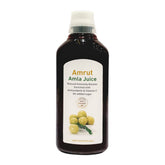
Why Do Athletes Suffer From Cramps?
A cramp can be defined as ‘sudden, involuntary, spasmodic contractions’ of selected muscles and many athletes especially during races, usually suffer from them. It is a quite common phenomenon which affects between 40% and 95% of athletes at some point in their lives.
So if you regularly have cramps or you experience them once in a while, here is some useful information to help you understand what is going on in your body.
About Muscle Cramps
Even though there is no exact explanation for Exercise Associated Muscle Cramps, we can explore the two main theories that try to understand its cause.
– The ‘Dehydration/Electrolyte Theory.’
This theory states that a significant disturbance in fluid or electrolyte balance causes the contraction of the interstitial fluid compartment around the muscles and a misfiring of nerve impulses which leads to cramping. This might be a consequence of a reduction in total body exchangeable sodium stores.
That is to say, if your body loses a significant amount of sodium and it is not replaced, it can cause fluid shifts in the body that in turn causes cramps.
Although this theory is based on plenty of case studies, observational data, anecdotal and expert opinion, it lacks the randomized controlled trials (RCTs) that are rightly considered necessary by proponents of evidence-based practice for it to be widely accepted as anything approaching ‘fact.’
-The ‘Neuromuscular Theory’
In this case, the theory suggests that muscle overload and neuromuscular fatigue are the leading causes of Exercise Associated Muscle Cramps. Moreover, fatigue contributes to an imbalance between excitatory impulses from muscle spindles and inhibitory impulses from the Golgi tendon organs resulting in a localized muscle cramp.
To simplify, since muscles are overworked and fatigued, they tend to cramp due to electrical misfiring.
As this theory is better suited to laboratory testing, there is more robust data to support that it is the case for the Dehydration/Electrolyte depletion model.
This theory is supported by the idea that stopping and stretching muscles is a universally effective method to alleviate a cramp when it is happening. Stretching puts the muscle under tension, invoking afferent activity from the Golgi Tendon Organs causing the pain to dissipate.
Choosing a Theory
It is important to clarify that this is not a question of choosing one theory over the other. There is no certainty of what is going on with muscle cramps so far, and by focussing on the disparity between these two somewhat incomplete theories, you might lose the merits of each of them and the actionable advice they have to offer.
What to Take From Each of the Theories
Cramping can be difficult to understand because it remains fickle and unpredictable making it difficult to pin down and study properly. That is why the evidence from both the Dehydration/Electrolyte theory and the neuromuscular theory is not as substantial as it might be.
An athlete usually suffers muscle cramps when participating, in long and hot races, but not always, and it may not occur during training. Cramps occur intermittently so aiming at only one factor or cure is not the answer.
Overall, muscle cramps are likely due to multiple causes including electrolyte imbalance and neuromuscular fatigue, but they are not limited to those triggers. As a consequence, it is probable that more than one intervention is needed to eliminate them
Athletes who suffer from muscle cramping usually try multiple solutions to try and alleviate the issue.
How to Eliminate the Cramp?
At the moment, there is no concrete solution to muscle cramping, and none appear on the horizon short of proper hydration.
However, if you suffer from muscle cramps, there are a few additional techniques that you can try to help get rid of them?
The most effective solution by far is a balanced spot nutrition electrolyte supplement, which has helped thousands of athletes worldwide.
1. Consume Additional Sodium
Consuming additional sodium is worth testing as it is cheap and straightforward to do. It is worth trying if your cramps occur during or after periods of lots of sweating, in hot weather, during more extended activities, or if you generally eat a low sodium diet.
If taking additional sodium, especially in the form of electrolyte supplements, you should make sure they are strong enough to make a real difference. Most sports drinks are incredibly light on electrolytes containing only about 300-500 mg sodium per liter (32oz).
On average, sweat contains over 800 mg of sodium per liter, and can be as high as 1000-1100mg/liter. Therefore, it is good to look for upwards of 1000 mg sodium per liter in a drink and even higher if you sweat more than average, or if your sweat is saltier than regular sweat.
If you consume salt or sodium separate from your fluids, in foods or capsule form, aim for a similar amount and remember that table salt (NaCl) is only 39% sodium so you would need 3g of salt to give you 1170 mg of sodium.
But remember, sodium doesn’t work in isolation, for best results you need to take it in conjunction with the other electrolytes found in sweat; potassium, calcium and magnesium. And in their proper ratios!
You should take the extra sodium in the hours immediately before and during activities in which you usually experience cramps. Keep a record of your results. You will notice right away if this is effective or not. After that, you can fine tune your dosage to prevent cramps while adding potassium, calcium and magnesium for a balanced formula.
2. Reduce Fatigue
Since it is suspected that fatigue is another cause of cramping, it is important to find additional alternatives to minimize cramps. Here are some options that may work for you.
- Train specifically for the event(s) that tend to induce cramps.
- Pace yourself appropriately based on fitness levels and environmental conditions to avoid overloading muscles prematurely.
- Taper into events so that you are fresh and well rested when you start.
- Make sure you are fuelled with plenty of carbohydrates before you start an event, and that you fuel adequately to avoid becoming glycogen depleted which can contribute to premature fatigue.
3. Other strategies
It is important to highlight that these strategies are not proven, but you can follow your intuition or different athletes’ experiences to decide if they are appropriate in your case.
- Sports massage and stretching of the affected muscles.
- Acupuncture.
- Doing warm-ups before cramp-inducing activities.
- Mental relaxation techniques.
It should be said that these ideas do not offer a complete solution to cramps. Nevertheless, they are generally accessible, inexpensive and may even benefit your performance in other ways, so you might want to give them a try and see what effect they have on you.


